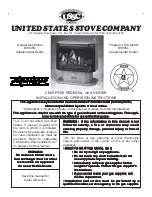
3
The Alejandría model, with its analogical thermostat, combines quality
with a friendly functional system.
This heater is fitted with a snap and analogical thermostat. Once the
heater is plugged at the appropriate voltage, the switch will be turned
on (Fig. A) and if the room temperature is lower than the one set with
the dial, the aluminum body will start warming up.
Once the room temperature reaches the set temperature, the thermostat
will cut the power, the resistor will stop working, the signal light will go
off and the heat supply to the heater will cease. The heater will remain
in stand-by until the room temperature gets below the set temperature.
To change the temperature, you must move the dial clockwise (Fig. B)
to increase the temperature and anticlockwise to lower it.
ALEJANDRIA MODEL- AN, ECO R ULTRA Y LPR
The EG model is the latest product in Farho range. This heater combines high technology
performance with easy use. Farho EG models can be programmed in up to six independent
operating periods for each day of the week and it can also be controlled from the front
panel.
This heater incorporates a “open window detection” function, which can be enabled
from the menu. When operating on this mode, the heater will pause the operation (i.e.
stop consuming) whenever it detects a drop of 2ºC or more on less than 5 minutes. This
function only applies when the heater is consuming.
ECO GREEN MODEL- ECG, ECG ULTRA
Increase temperature and scroll up on menus.
Decrease temperature and scroll down on menus.
Enter menu / Accept / Back (long press).
DESCRIPTION OF THE KEYPAD AND DISPLAY:
The Eco Green model is controlled by an intuitive menu, thus greatly facilitating its use.
In order to access the menu, simply press the button labeled (OK) and scroll through
it by pressing the buttons (+) and (-). To go back to the previous menu, just press
and hold until “Back” is displayed on the screen.
To select a menu item or to perform an action, simply press for a short period.
1.
TIME.
2.
ACTIVATED PROGRAMMES.
3.
DAY OF THE WEEK.
4.
ROOM TEMPERATURE.
5.
DESIRED TEMPERATURE.
1
4
5
2
3


































